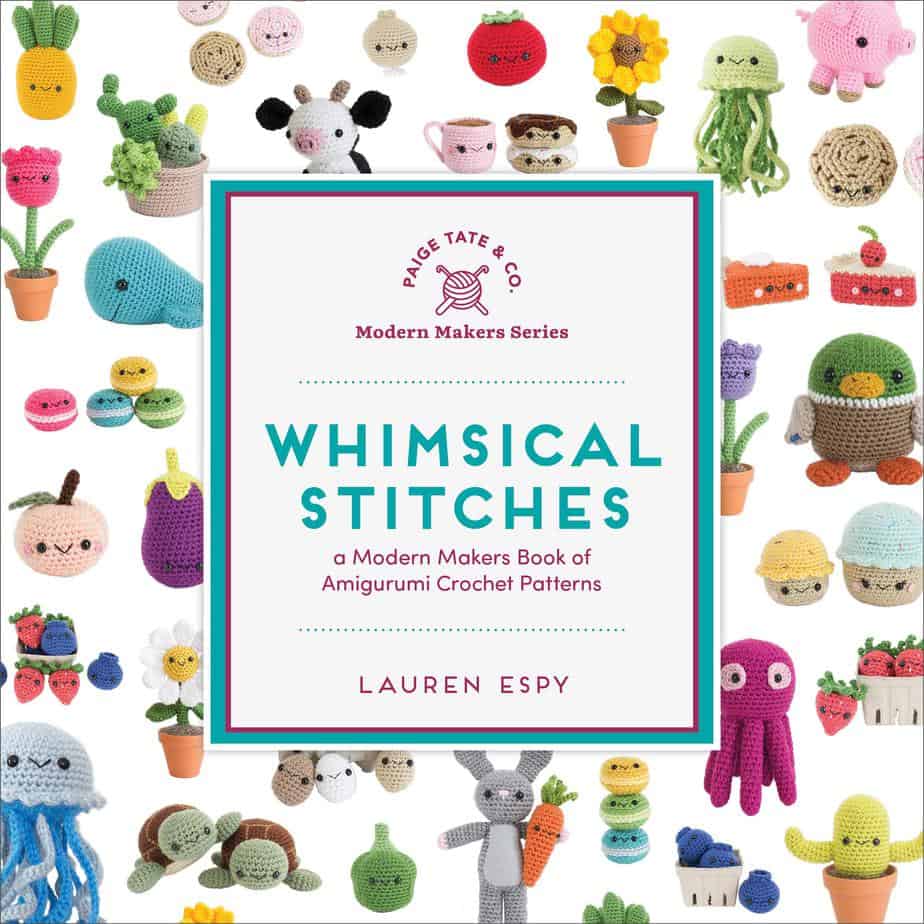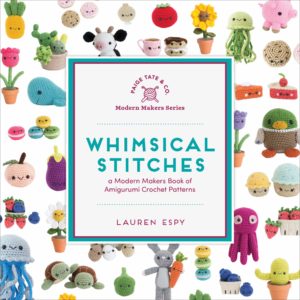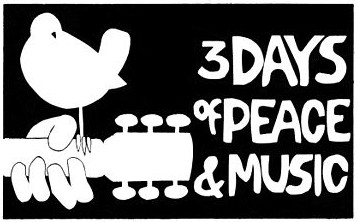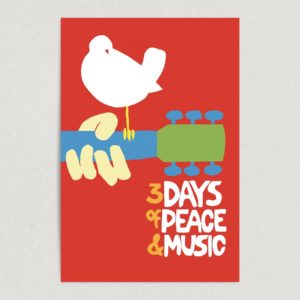
3
OctFriends Forever: In Life and In Picture Books
 At this busy time in my life, I’m starting to realize the true importance of friendship even though I have never had less time to devote to it. My closest group of friends are three women who I’ve known since I was six years old. We’re fortunate enough to have weathered many storms together, even though we’ve been physically separated for over 20 years. After we left our beloved Catholic K-8 school, we all attended different high schools and colleges. I moved away from my hometown in New York to permanently settle here in suburban Boston. Another woman in our group moved to Pennsylvania. Yet thanks to modern technology and social media, we’ve kept in touch and are closer than ever as support one another on the journey of motherhood.
At this busy time in my life, I’m starting to realize the true importance of friendship even though I have never had less time to devote to it. My closest group of friends are three women who I’ve known since I was six years old. We’re fortunate enough to have weathered many storms together, even though we’ve been physically separated for over 20 years. After we left our beloved Catholic K-8 school, we all attended different high schools and colleges. I moved away from my hometown in New York to permanently settle here in suburban Boston. Another woman in our group moved to Pennsylvania. Yet thanks to modern technology and social media, we’ve kept in touch and are closer than ever as support one another on the journey of motherhood.
My best friends have taught me that I need three things to make friendships last through adulthood: laughter, forgiveness, and support. The mysterious balancing act of balancing work, motherhood, and being a wife and daughter can be overwhelming. Laughing our way through the difficult things with my friends is the only thing that keeps me from running away at times. Whenever we get together or talk on the phone, tears are guaranteed, not because we are crying but because we make each other laugh until we cry. Laughter truly is the best medicine and the world feels right again once I’ve been laughing with my friends.
My second key friendship value is forgiveness. Life is moving very quickly for me these days. In a rush of school drop-off, activities, working, weekend plans, cooking, tidying, and the occasional date night or two, I know I often neglect relationships outside of my family. I need my friends to forgive me for forgetting to call them back or not sending a thank-you note. I don’t make enough effort to drive down to my hometown to see my friends now that my parents aren’t living there anymore. I’m probably going to let you down if you have rigid social expectations, not because I’m rude or don’t care but because I am usually exhausted and often forgetful. Luckily, my best friends are right there with me in the struggle and never judge me if I have to postpone our phone chats because I’m dealing with a sick kid or a homeowner crisis.
Finally, I need my adult friends to be supportive. Our adolescent days of talking uninterrupted on the phone might be over, but I always have time to shoot my friends a quick text or Facebook message. We have a Facebook group that’s our safe space to vent about our husbands and work, worry about our kids (as well as show them off) and share whatever is going on in our lives. That support is my lifeline through everyday ups and downs and it keeps our friendship current and accessible in a busy world.
Reading picture books aloud is one of the great joys of being a children’s librarian. Some of my favorites are those that focus on friendship. Not the overly saccharine texts that feature perfectly behaved people (or animals) but the real ones that show how mutual regard and affection can sustain two people (or animals) through life’s imperfections. Often, friendships in picture books have an “odd couple” quality that only adds to their charm.
The brilliance of George and Martha by James Marshall has set the standard for portraying friendship in picture books. These two delightful hippopotamuses are best friends who know each other through and through. George isn’t the most clever hippo and Martha often outsmarts him but he’s also joyful and supportive. He does frequently snoop through Martha’s things but she always forgives him. Martha can be a diva but she’s always a good sport. She can be ill-tempered but is quick to get over an argument. Nothing much ever happens in their stories but somehow James Marshall’s understated text and illustrations create their profound friendship. Other delightful George and Martha books include George and Martha: One Fine Day, George and Martha: Rise and Shine, and George and Martha: Back in Town.
Arnold Lobel created the classic Frog and Toad series, stories that show the everyday dramas and misadventures of America’s most famous amphibians. These two friends also have their ups and downs but are only really content when they are together. They often miss each other and wonder what the other is doing when apart. Neither of them are perfect though. Toad can be a little lazy and is self-conscious about how he looks in a bathing suit. Frog loves pulling pranks and loves horror stories even more. But each appreciates the other for who he really is and their stories teach children to value individuality over sameness in a relationship. Frog and Toad’s adventures are featured in Days with Frog and Toad, Frog and Toad Are Friends, Frog and Toad Together and Frog and Toad All Year.
Both George and Martha and Frog and Toad were written in the 1970s. No other picture book duo approached classic friendship status until Mo Willems created Elephant and Piggie. In Today I Will Fly, we are introduced to Gerald, a lovable but slightly neurotic elephant prone to meltdowns, and Piggie, a carefree, laid back pig with a playful side. My best friend, who is also a children’s librarian, declares that there are two types of people in this world: Geralds or Piggies. Willems clearly casts the pair as an odd couple with Gerald as a Type A rule follower and Piggie, who is cheerfully free and easy. It goes without saying that my friend and I are clearly Geralds. Gerald and Piggie solve all sorts of friendship problems like sharing issues, not liking your best friend’s favorite food, and what to do when the weather doesn’t cooperate with your plans. More riveting adventures can be found in all 25 volumes in the series.
These picture books reflect the complexities and wonderful realities of friendship. Our friends sustain us not only as we face the trials and tribulations of life but also through the everyday mundane details of living. The friends in these books hold up the ideal qualities of friendship while being imperfect animals. They accept and love their friends even when they aren’t their best selves. And that is the most enduring and satisfying thing about friendship in childhood and in adult life.
Kate Tigue is the Head of Youth Services at the Morrill Memorial Library in Norwood, MA. Look for her article in the October 3, 2019 issue of the Transcript and Bulletin.

26
SepWhat Have I Gotten Myself Into?
 In three days I depart for Ghana, bound for a rural village with no running water or internet access, to work on a construction project for two weeks. I acquired my mosquito net, anti-malaria meds, and a large packet of pre-departure materials. This is how I plan to spend my annual “vacation,” and right now I’m questioning my sanity.
In three days I depart for Ghana, bound for a rural village with no running water or internet access, to work on a construction project for two weeks. I acquired my mosquito net, anti-malaria meds, and a large packet of pre-departure materials. This is how I plan to spend my annual “vacation,” and right now I’m questioning my sanity.
The first time I ever left North America, I ventured to Duran, Ecuador on a high school volunteering trip. My Catholic school had a partnership there and groups visited annually to help out in schools and a soup kitchen, and embed themselves in the local community. In retrospect, we didn’t accomplish much of anything, but the value lay in exposure to the reality of life and hardship in a developing country. As a teenager, it opened my eyes to water and electricity shortages, unsanitary conditions, infant mortality, and other struggles experienced by the warm and welcoming people we met. Perhaps the experience sparked my interest in travel to off-the-beaten-track regions, and service abroad.
Over the years my passion for travel grew, and while working at a college, I spent several years co-leading service-learning trips to Nicaragua and Mexico. In that academic environment, surrounded by faculty well-versed in social justice issues, I questioned the benefit of these endeavors at times, and in many ways changed my point of view regarding volunteering.
Some circles have expressed a backlash against “voluntourism,” or “volunteer vacations,” on the grounds that they promote a “savior complex,” undermine local expertise and activism, and produce accolades and social media photo-ops without making a real difference. Some feel that any charity work must be better than nothing, but with increasing awareness of privilege and economic disparity, the debate continues. An excellent documentary available on Hoopla entitled H.O.P.E. Was Here profiles a group of college students traveling to Peru and insightfully exploring these conflicting perspectives. In my opinion, ethical volunteering abroad is surely possible. But if you’re going to do it, do it right! Here are some rules I try to follow:
Learn about a culture before entering it for the purpose of “helping.” I knew nothing about the history and politics of Ecuador before I went, very little about the people, and had zero Spanish language skills. How can one “help” people without understanding them? I urge anyone to read up before traveling anywhere, whether for pleasure or volunteering. Reading individuals’ stories including The Country Under My Skin before going to Nicaragua, Enrique’s Journey before Mexico, I, Rigoberta Menchu before Guatemala, and Mandela’s Long Walk to Freedom prior to South Africa enhanced my experiences to these countries immeasurably.
Learn at least the basic greetings in another language before traveling; the library has free resources that make this easy. In addition to travel books and CDs, why not try our Mango language learning program by logging in from anywhere using your library card? Norwood’s library and the Minuteman network have hundreds of travel guides by Lonely Planet, Fodor’s, Moon, and others, which in addition to travel recommendations include primers on history and politics, tips on cultural differences, and useful foreign language words and phrases. I’m currently scouring the Bradt Travel Guide: Ghana, and borrowing Pimsleur’s Twi language CDs.
Regarding volunteering in particular, seek out programs that are locally led and administered. Rather than traveling with preconceived notions of how you may improve another community, respond to the citizens’ own identified needs. Make sure a project demonstrates sustainability; don’t start something the community cannot maintain after you leave. Do not engage in work for which you are not qualified. I used the book Volunteer Vacations: Short-Term Adventures That Will Benefit You and Others to select my upcoming Ghana placement. I chose the program because Ghanaians run the project and have an infrastructure set up for an ongoing flow of short-term and long-term volunteers coming and going, working alongside locals. Additionally, I had to be accepted to the program, submit to a background check, and sign off on a strict code of conduct agreement very attentive to cultural sensitivity.
The village also has medical and school projects that require participants to have some credentials in either field. Lacking these, I will do manual labor instead, mixing cement, bricklaying, and painting, from 8:30 – 4:00 Monday through Friday. Is it too late for me to change my mind?! It may seem obvious that volunteers should have qualifications to do certain types of tasks, yet I’ve heard of undergraduates on service trips helping to deliver babies, and seen high school students spending time in orphanages where they make bonds with already-traumatized children, only to depart after a week or two. I aim to avoid doing anything that would not fly at home, including things like picking up children and taking photos with them without an adult’s permission, or posting photos online that do not portray the subjects with accuracy and dignity.
In four days I will land in Accra, and transfer to a dormitory with bunk beds, outhouses, and intermittent electricity. For reading material I will carry The Door of No Return: The History of Cape Coast Castle and the Atlantic Slave Trade, since I plan to visit the infamous slave port on a weekend excursion. I’ll also read a fiction selection, Homegoing, by Yaa Gyasi, which tells the tale of Ghanaian half-sisters, one of whom marries a colonial Englishman and lives a privileged life, while the other becomes a slave sent to the U.S. My contribution to the small village as a volunteer will be a drop in the bucket, but at least I will do no harm, and I will benefit immensely from a difficult but transformative experience and immersion in another culture. Although I may question the wisdom of my vacation choice, in the thirty years since that first trip to Ecuador, I have yet to regret a single volunteer travel experience.
Lydia Sampson is the Assistant Director of the Morrill Memorial Library in Norwood, MA. Look for her article in the September 26, 2019 issue of the Transcript and Bulletin.

19
SepThe Crochet Craze
 I remember, years ago, watching my mother and aunt crochet the infamous “Ripple Afghan.” My mother’s was a range of dark purple and magenta colors. I was fascinated, watching it unfold. She would watch her “stories” after finishing her housework for the morning and then crochet. I was about 8 or 9 and was always interested in all things crafty. I had made “Jeannie in a Bottle” using a Palmolive bottle and a miniature doll after having seen one at my neighbor’s house. I collected my sister’s and brother’s old baby socks to use as “stuffing” for my sock pets, which were more tied than sewed. Seeing my interest, Mum patiently took some of her scrap yarn and a G hook and taught me how to crochet. I was, as the saying goes, hooked!
I remember, years ago, watching my mother and aunt crochet the infamous “Ripple Afghan.” My mother’s was a range of dark purple and magenta colors. I was fascinated, watching it unfold. She would watch her “stories” after finishing her housework for the morning and then crochet. I was about 8 or 9 and was always interested in all things crafty. I had made “Jeannie in a Bottle” using a Palmolive bottle and a miniature doll after having seen one at my neighbor’s house. I collected my sister’s and brother’s old baby socks to use as “stuffing” for my sock pets, which were more tied than sewed. Seeing my interest, Mum patiently took some of her scrap yarn and a G hook and taught me how to crochet. I was, as the saying goes, hooked!
Thanks to my mother, I have a passion for teaching others this craft. I have been co-teaching Learn to Crochet classes at the library for the last year; having met many people at a variety of skill levels, I am always on the lookout for simple projects that can be worked up quickly but will also be interesting enough for more advanced crocheters. At our last class we learned how to make a “Super-Simple Potholder.” It was just a basic single crochet stitch, but could really be adapted to any pattern that matched the stitcher’s abilities and interests.
I am amazed at the overwhelming response we have had to the Learn to Crochet program at the library. We have been offering it on the first Thursday every other month, but because the response has been so positive we are adding some extra classes (check our website for details). In addition, the library offers Stitch Therapy (6:30 pm-8:30 pm on the third Tuesday of each month) which serves stitchers of all types and also provides the services of a Stitch Doctor for private appointments (book through our website). Thus, our newbie crocheters can gather with others and continue their learning.
While looking for a new idea to bring to the class, I came across Literary Yarns, an adorable how-to book for crocheting mini literary characters. They are created in what is known as the “amigurumi style.” Amigurumi Today describes amigurumi as “the Japanese word which describes small knitted or crocheted stuffed toys, often in the shape of characters, animals, mini foods, household objects and scenery. It comes from the two root words ami, meaning crocheted or knitted, and nuigurumi, which means stuffed doll.” Literary Yarns, included such characters as Anne of Green Gables, Jay Gatsby and Daisy, and Dorothy (complete with tiny Toto in a teeny basket). Books and crochet… does it get any better than that?
I have, of course, seen many items of amigurumi. One of my coworkers is an avid crocheter and usually brings a “critter” per week in for us to see. She has stitched tiny mice, bears, cactus, dolls – really hundreds of projects. We are all following her progress as she makes an entire coral reef using crocheted sea creatures.
There are hundreds and hundreds of designs and all begin with the simple single crochet. If you can make a chain and a single crochet, then you can make amigurumi! One of the most delightful amigurumi books the library has is called Whimsical Stitches. There is everything in there from donuts to jellyfish! Many of the projects can be done in one sitting, often using just scraps of yarn, so they are cost-effective and also, what we in the “biz,” call “stashbuster” projects. Another book I can recommend is Mini Crochet Creatures. This book gives you 30 adorable mini animal patterns. Fun! I also found a very helpful video on YouTube that shows how to crochet in detail: Duck Amigurumi Tutorial (Crochet for Beginners). Of course, if you have never crocheted and need the very basics, the library offers the book How to Crochet. This gives simple, illustrated instructions and goes well with any teach-yourself-to-crochet video you might find.
After all of this research I ordered some yarn and other supplies. Most of these amigurumi characters have eyes, which in any medium can be daunting (that darn French knot!), but I have found that they sell child-safe beaded eyes that you can attach, just as you would an earring, going from the outside to the inside of your work. The effect is adorable – a large head with black beaded eyes… who could resist? I quickly stitched up Anne of Green Gables (a personal favorite) and am thinking about how I can adapt the pattern to make Laura Ingalls Wilder. Really, the possibilities are endless!
I look forward to many enjoyable hours creating these projects, and, hopefully, teaching others too.
Carla Howard is the Senior Circulation and Media/Marketing Assistant at the Morrill Memorial Library in Norwood, MA. Look for her article in the September 19, 2019 issue of the Transcript and Bulletin.

12
SepWe Were Stardust, We Were Golden
 I was a rising high school senior in the summer of 1969. Far away from Bethel, NY, on the coast of California, I never even knew Woodstock was on the horizon. We all read newspapers and magazines and watched the nightly news. So we knew that something momentous happened on a muddy farm 3,000 miles to the east. Something terrifyingly huge, slightly obscene, and wickedly defiant had ignited while I lived my mini-skirted, innocent, bleach-blonded summer among the dry grasses of Northern California.
I was a rising high school senior in the summer of 1969. Far away from Bethel, NY, on the coast of California, I never even knew Woodstock was on the horizon. We all read newspapers and magazines and watched the nightly news. So we knew that something momentous happened on a muddy farm 3,000 miles to the east. Something terrifyingly huge, slightly obscene, and wickedly defiant had ignited while I lived my mini-skirted, innocent, bleach-blonded summer among the dry grasses of Northern California.
Woodstock, like most unexpected events, might not have occurred, had the stars not aligned. Two young guys, 24-year old Michael Lang, and 26-year old Artie Kornfeld had an idea for a Studio-in-the-Woods north of New York City. Kornfeld was already a vice-president at Capitol Records, but he and Lang needed financial backing. Enter two other young guys in their mid-twenties, entrepreneurs Joel Rosenman and John Roberts. Roberts was an heir to the Polident/Poli-grip fortune, and Rosenman was Robert’s good friend with a musical background. They had met on a golf course and were apartment mates in New York City. The two described themselves as “young men with unlimited capital.”
Within months, Woodstock morphed from a plan to build a studio that would attract big-named bands and musicians to an idea for an outdoor concert initially planned for just a few thousand. That audience of a few thousand grew, well-known bands, signed on, and larger and larger sites were sought. Simply, what followed at Yasgur’s farm would not have happened without these four young men, hundreds of performers, the generosity of Max and Mimi Yasgur and neighboring townsfolk, free-flowing dollars of John Roberts and his family, the 400,000 to 500,000 concert-goers, the rolling hills of Bethel, New York, and the adequate preparation. And helicopters. Dozens of them.
“The New York Thruway is closed, man,” Arlo Guthrie, exclaimed.
The NY Thruway wasn’t actually closed. But it very nearly was, and the smaller routes leading into the countryside were indeed jammed. Concert-goers abandoned their cars miles from the event. Musicians had to be fetched and returned by privately-contracted helicopters paid for by the producers. So many people got to Yasgur’s farm, sometimes days earlier than the event was to begin, that no tickets were actually sold on site. Everyone, with or without the advance tickets, was let in. (The tickets for the three-day event were $18 in advance and would have been $24 at the gate.)
1969 was, to use a cliché, a watershed year. The Beatles had happened and were happening still, and the music was changing monthly. The Vietnam War was raging on. Drugs, love, and freedom were marching across the country from every direction, particularly from the west coast. Revolution on campuses, in fashion, on television, and in music stormed like a tidal wave across the country, reaching every city and small town in America. Woodstock was both a catalyst and a result of an era that amazed everyone.
In Rockin’ the Free World! How the Rock & Roll Revolution Changed America and the World, Sean Kay writes that rock and roll was “an idea, an attitude, and a way of thinking about the world.” The rock and roll that exploded in New York state at Woodstock, with hundreds of thousands of participants, and then millions more who witnessed the film and soundtrack, changed history for all of us.
Woodstock was released six months later in March 1970 (the documentary film authorized by the producers, now in debt after the costs the event far exceeded any profit). Fifty years ago was certainly a different era. No smartphone cameras or audio recorders, no YouTube, Instagram, Twitter, or the Internet. Yet, the three-hour film allowed everyone to experience Woodstock. Performances were included by some already-famous artists and bands (Jimi Hendrix, The Who, Janis Joplin), and some were made famous by their appearance (Crosby, Stills & Nash, Richie Havens, Santana). The film won the Academy Award for Best Documentary Feature in 1970, although it hardly needed the award to be successful. The non-simultaneously-released soundtrack hit the record stores on May 11, 1970, in time for my 18th birthday, graduation from high school and a summer of musical bliss. Demonstrations against the Vietnam War ramped up when a generation who witnessed Woodstock vicariously sang along to Country Joe’s Vietnam song. It was unfortunate, but soldiers fighting in that war came home to a generation made even angrier by Jimi Hendrix’s Star-Spangled Banner and its striking and haunting guitar chords mimicking the sounds of battle. Yet, it is arguably those songs that helped the Vietnam War end in 1974.
A half-century after Woodstock, the songs and scenes are part of at least one or two generations’ psyche. A majority of parents, World War II vets, and Republicans were repulsed. Yet, Max Yasgur, the Republican dairy farmer who allowed the event on his land, supported the war. However, he believed in freedom of speech and was repulsed by the discrimination others in the geographic area felt towards the younger people attracted to Woodstock.
The fiftieth anniversary of Woodstock was never pulled off this past summer. It was canceled by the event coordinators. Only three of those four young men are alive today. Yasgur moved to Florida and died four years after the event.
In Never a Dull Moment: 1971 The Year That Rock Exploded (2016), David Hepworth wrote that Woodstock the film “was a greater watershed than Woodstock the event. For the people who actually endured three days in the mud and chaos… the festival was a standard mixed bag. The people whose heads were really turned were the millions who had the experience mediated through” the film. The Woodstock Generation grew dramatically with the film and soundtrack.
You can relive Woodstock, or experience it for the first time, by watching the documentaries available on DVD at the library: the original three-hour Woodstock: 3 Days of Peace and Music or PBS American Experience documentary, Woodstock: Three Days that Defined a Generation. Two pictorial works, Woodstock 1969: The Lasting Impact of the Counterculture (2018) and Woodstock: Three Days that Rocked the World (2019) are full of wonderfully nostalgic photos, quotes, and memories.
If you were a teen or young adult in 1969 or the years following, if you were at Woodstock, or you experienced it vicariously through the albums and documentary in 1970, the words of Joni Mitchell (who never was at Woodstock but was the girlfriend of Graham Nash) will resonate with you. I know they do with me.
“By the time we got to Woodstock, we were half a million strong. And everywhere there was song and celebration. And I dreamed I saw the bombers riding shotgun in the sky. And they were turning into butterflies above our nation. We are stardust billion-year-old carbon. We are golden, caught in the devil’s bargain. And we’ve got to get ourselves back to the garden.”
Charlotte Canelli is the Director of the Morrill Memorial Library in Norwood, MA. Look for her article in the September 12, 2019 issue of the Transcript and Bulletin.

6
SepHere, Now
 When you’re in the reading game, you get recommendations for all types about books you just HAVE to read. Sometimes books are suggested to me because people know that I am interested in a certain subject, genre or author. More often, the people doing the recommending are overwhelmed by how a particular book made them feel and they want to pass along the experience. I have learned to adjust my expectations accordingly. I try to weigh what I know about someone’s personality and reading preferences against my own before racing out to get a copy of the book. This can be problematic, since I work in a library and regularly get recommendations from people I don’t know at all.
When you’re in the reading game, you get recommendations for all types about books you just HAVE to read. Sometimes books are suggested to me because people know that I am interested in a certain subject, genre or author. More often, the people doing the recommending are overwhelmed by how a particular book made them feel and they want to pass along the experience. I have learned to adjust my expectations accordingly. I try to weigh what I know about someone’s personality and reading preferences against my own before racing out to get a copy of the book. This can be problematic, since I work in a library and regularly get recommendations from people I don’t know at all.
A few years ago I got a recommendation from someone I did know. Tim was a friend from my college days with a keen mind and an easy laugh; he was also one of those people that go around doing good deeds for no reason. At nearly six feet seven inches tall, he was built like a linebacker. He’d driven off to Key West his senior year, and I had a comical vision of him jammed behind a steering wheel on what must have felt like the longest road trip ever. Tim never moved back to New England but we did exchange sporadic letters, emails and the occasional marathon phone call over the years. In spite of the distance I considered him one of my closest friends and delighted in hearing about where life had taken him. Of all the people I have known, and to good effect or bad, he was singular in his ability to live in the moment. During one of our last email volleys he mentioned reading Jon Kabat-Zinn’s Wherever You Go, There You Are. I jotted the title on a piece of paper, and scribbled “Tim” next to it. Then, as sometimes happens, my reminder got lost in the shuffle. Our friendship also went into one of its periodic hibernation modes as I juggled grad school and multiple part-time library jobs. When Christmas cards went unanswered, I was at last spurred to action. I went online to check his phone number, but as my cursor hovered over a White Pages link, the next entry down caught my eye. It was an obituary for someone with the same name. I clicked automatically, thinking of the laugh we’d have later about how different his namesake was. Alas, the obituary was in fact Tim’s. I would later find out – via a note on the outside of my eventually returned Christmas card – that Tim’s heart had given out, which I found ironic given his big-hearted nature.
When I recently saw Kabat-Zinn’s name in another author’s bibliography, I felt the universe prodding me to make good on my offhand promise to read Tim’s recommendation. I learned that Kabat-Zinn is the founder of the Stress Reduction Clinic at the University of Massachusetts Medical School. Unlike the author’s first book, Full Catastrophe Living, which was geared toward people managing pressing medical problems like those in his clinic, Wherever You Go, There You Are is meant as an introduction to the essence of mindfulness meditation. Very short chapters focus on different facets of the practice, and many chapters conclude with a suggestion for incorporating the different aspects into one’s life. Given this format, and in the spirit of being present in the moment rather than focusing on where I’m going, I’ve chosen to take my time with it in order to try the suggestions rather than skipping them to read the book straight through. I find the exercises, such as taking a few minutes several times a day to simply focus on my breath, to be quite helpful. I’m also amazed at the significant impact on my mindset, whether it is an ordinary day or one in which I am grappling with larger issues. In a meaningful coincidence, Tim’s recommendation is helping me process the grief caused by his death.
I actually tried meditation ages ago, when I was suffering from cluster headaches and resisted the idea of treating them with a prescription. My then-doctor suggested meditation, and recommended The Relaxation Response, by mind-body medicine pioneer Dr. Herbert Benson, who went on to write several other books on the subject. This offers a quick introduction to using transcendental meditation to manage stress and stress-triggered illnesses. While the practice did help with stress, and therefore my headaches, I didn’t maintain the habit, especially after my headaches mercifully withdrew. I guess that’s why Kabat-Zinn describes mindfulness as being simple, but not easy. So ingrained is our automaticity that it can be difficult to practice awareness within any given moment. That’s why I personally find reading about meditation to be so helpful; it serves as a gentle reminder to keep at it. While I work my way through those suggestions for bringing mindfulness back into my life, I’ve also been listening to the abridged version of Kabat-Zinn’s Coming to Our Senses, a work that connects mindfulness to both physical and spiritual wellbeing as well as examining how our individual development contributes to a healthier world as a whole. Warning: this is heady stuff, and I found myself rewinding a lot, so perhaps it is better listened to when not driving. Yet the ideas therein are compelling and worth the effort, and there are some great suggestions for various meditations in different postures including: sitting, lying down, standing and even walking. Kabat-Zinn has published numerous other books and CDs that are available in the Minuteman Library Network to help people begin or improve a meditation practice.
I wonder what Tim would think about our impromptu, beyond the grave book group. I regret that I didn’t read his recommendation while he was still alive so we could talk about it. Yet given his propensity for living in the moment I think if he could speak from the great beyond he’d probably just point out that I am here, now.
Kirstie David is the Literacy/Outreach Librarian at the Morrill Memorial Library in Norwood, MA. Look for her article in the September 5, 2019 issue of the Transcript and Bulletin.
